An essential skill for any cyclist is the ability to fix a flat tire. If you can, you’ll almost never get stranded on a ride. Some cyclists carry a new tube while others prefer the weight and space savings of a patch kit. I often carry both.
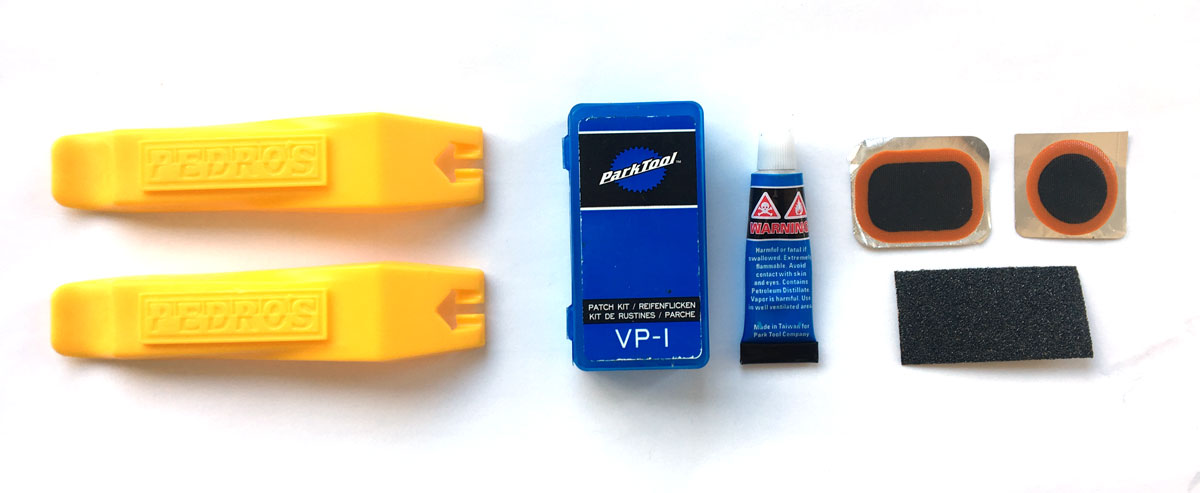
Patching your tubes can save you from buying a new one every time you find an errant piece of glass or metal in your tire. Even if you swap the tube while on the road to save time, patching the puncture later allows you to re-use a tube that would normally end up in the trash.
The first step is removing the tube from the tire. Insert a tire lever under the bead of the tire and push down to pry the bead out and over the edge of the rim.

Slide the lever around the entire circumference of the wheel so one side of the tire is off the rim.

You can now pull the tube out from inside the tire.
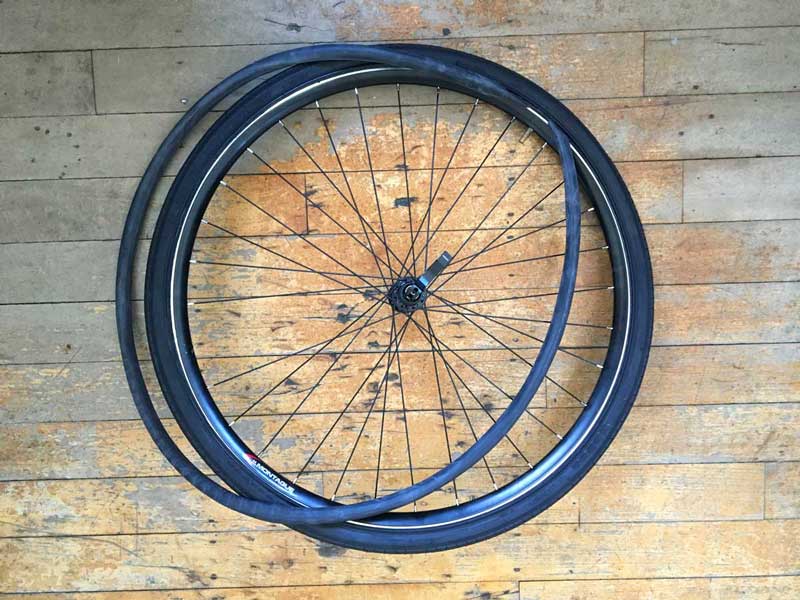
To free the valve, simply push the tire back onto the rim above it. Push it all the way to the other side to expose the valve and it can be pulled straight out. I recommend noting the orientation of the tube as it comes out of the tire. If you find the puncture and can match it up to a location on the tire, you can easily find what caused the puncture.
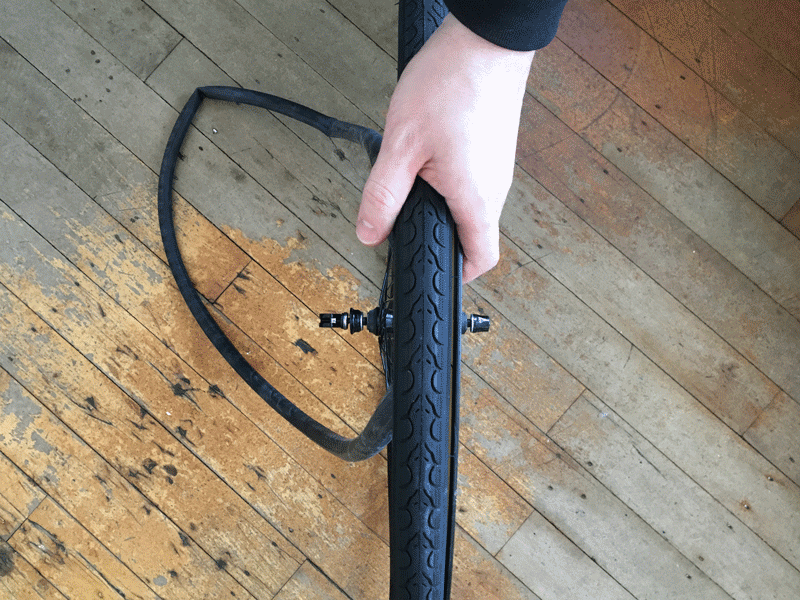
Inspect the tube for any obvious punctures. Most will be too small to see but if there is a large tear, you may want to skip the patch and simply install a new tube. Anything larger than a millimeter or so is likely a lost cause.
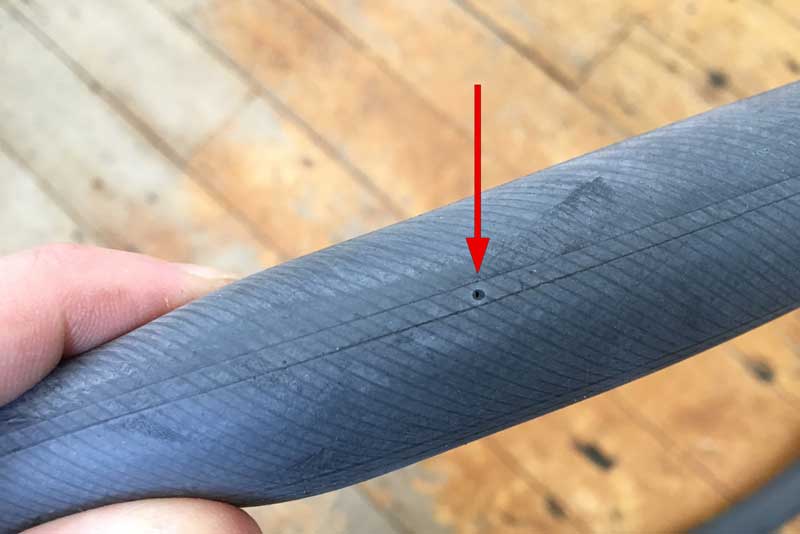
To find a small hole, add air to the tube until it expands to 2 or 3 times it’s original size. At this point you may be able to hear the air escaping. Put the tube up to your ear and move the entire length of the tube past your ear while listening carefully. If you still don’t find the leak, onto the next method.
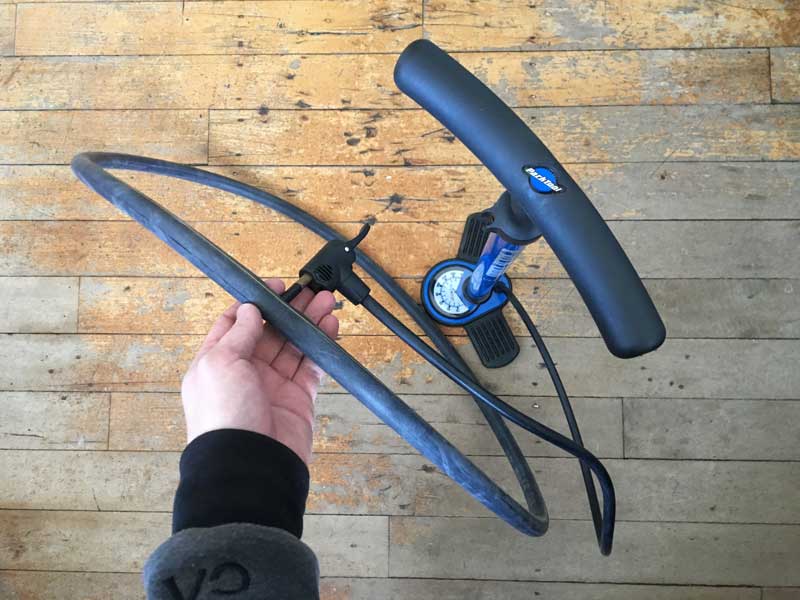
Fill a large bowl or other container with water and submerge one section of the tube. Slowly move the entire length of the tube through the water looking carefully for air bubbles. The source of the air bubbles is your puncture.

When you find the puncture with any of the above methods, I recommend circling it with a permanent marker so you don’t lose the location.
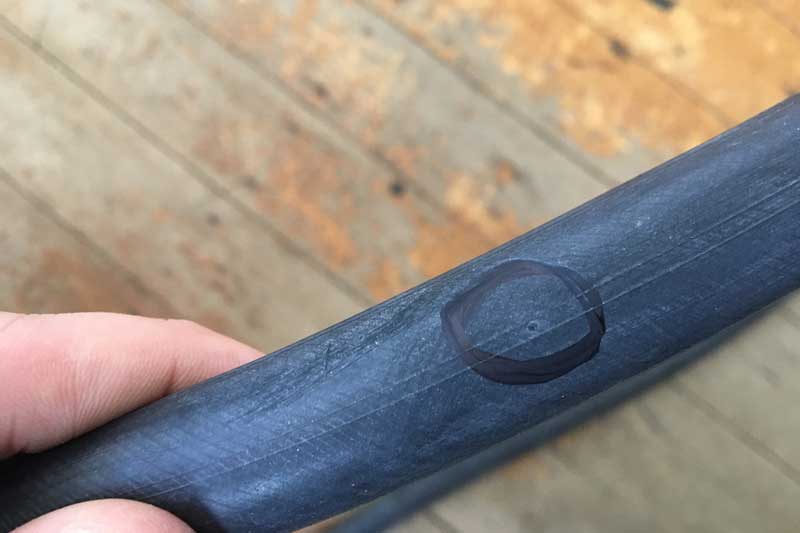
Your patch kit should come with a few basic items: the patches themselves, a tube of adhesive, and a small piece of sandpaper. Start by lightly sanding the area around the hole. Roughing up the material allows for the glue to better bond with the rubber.

Next, choose the appropriate size patch for the hole. Most kits come with small, medium, and large patches.
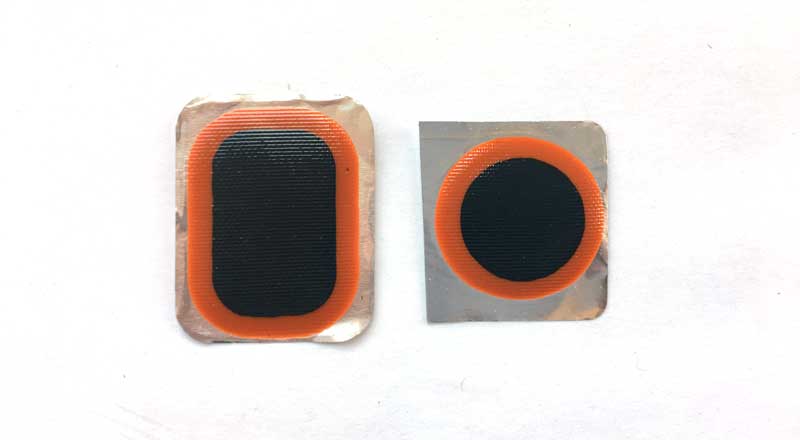
Take the glue and squeeze it directly onto the tube over the hole. Spread it around in a circle slightly larger than the patch you’re using. Be generous with the glue. Using too little will end in your patch not holding and there’s little harm in using too much.
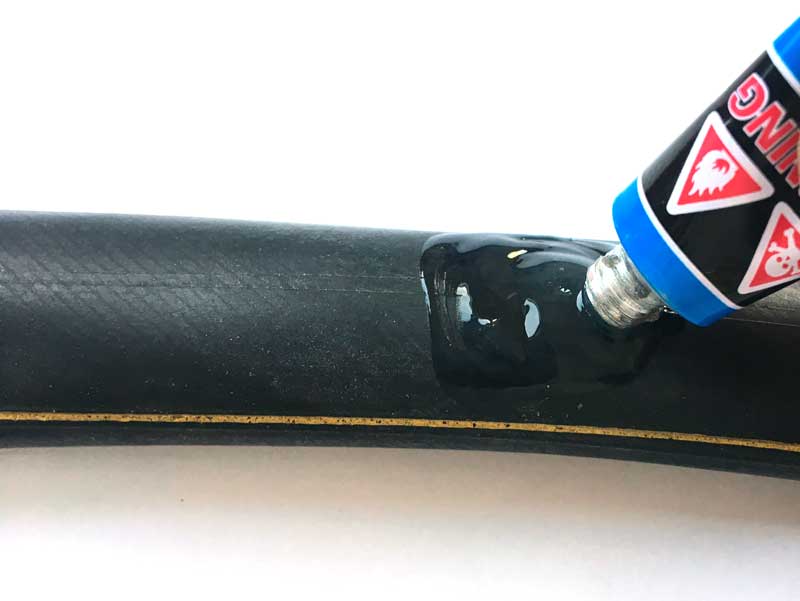
You actually want to let the glue dry some before applying the patch. Wait a few minutes until the glue is tacky but no longer wet. Now peel the patch off foil backing.
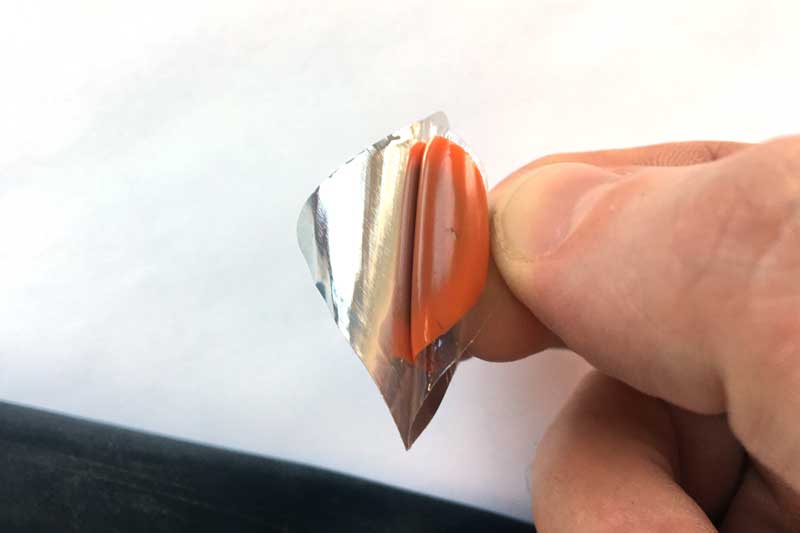
Center the patch over the hole and press it onto the glue. Make sure all the edges are pressed down and held in place. I like to squeeze the patch and tube between my fingers for a few minutes initially to be sure it doesn’t lift up from the tube’s natural curve.
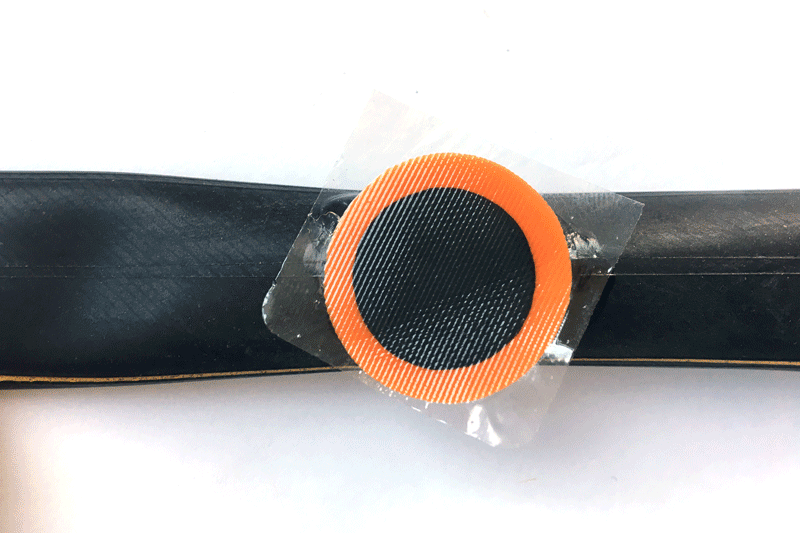
Ideally you want to wait at least 20 minutes before reinstalling the tube and inflating it. You risk having the patch blow out from the pressure if it’s not sufficiently dried, but when out on the road I’ve been know to push it to less. Some people will tell you to peel that thin plastic sheet off the top of the patch, but I usually leave it on. It can be difficult to get off and it actually stops the patch from sticking to the inside of the tire.
When you’re ready to reinstall, add a small amount of air to the tube to give it some shape. Then, just above the valve hole in the rim, push the tire back over the rim to expose the hole and slide the valve stem in (this will be the exact reverse of step 4 above). Then tuck the tube back into the tire all the way around and push the bead of the tire back onto the rim using your thumbs. Once it’s fully seated, inflate the recommended pressure for your tire and get back to riding!


My father used to tell me after the initial inflation to completely deflate the inner-tube and inflate it a second time. This supposedly lets the tube relax and move to a more natural less pinched place.
Thanks for the tip! I love learning these little tricks passed from one mechanic to another that you won’t find in any manual.
Just used this tutorial and it was seem less! So helpful, thank much!!
Good article. Now with the advent of tubeless compatible rims, tires are often more difficult to mount. Here are some other helpful comments (not necessarily intended for on the ride times). Use gloves (you have more power), use lubricant (talc or even water will help), focus on being sure the beads are in the center of the rim (it’s the center of the rim that dictates how hard a tire is to mount), mount the valve last (against all of the older methods that mounted it first – last is easiest), at home and with folding tires heat them up a little bit to stretch the bead, stretch the folding beads a little. But my girl friend has the absolute best method – get someone else to do it. Guys always want to show how good they can mount a tire, give them a chance.